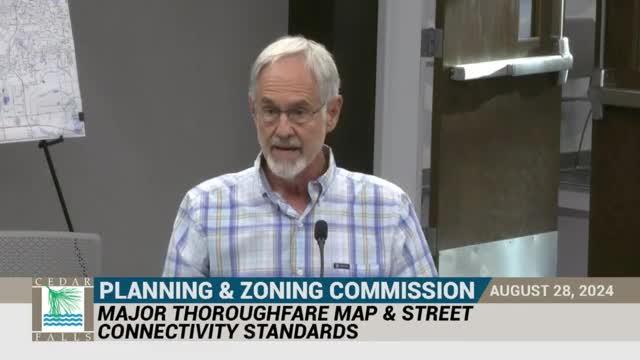Quality of life suffers in disconnected neighborhoods
August 29, 2024 | Cedar Falls, Black Hawk County, Iowa
This article was created by AI summarizing key points discussed. AI makes mistakes, so for full details and context, please refer to the video of the full meeting. Please report any errors so we can fix them. Report an error »

In a recent government meeting, officials addressed the pressing issue of urban connectivity and its impact on residents' quality of life. The discussion highlighted how disconnected neighborhoods lead to increased travel times and inconveniences for residents, whether they are commuting to work, attending school, or engaging in community activities.
One official emphasized that the lack of connectivity results in more stop signs and red lights, contributing to a chronic degradation of the driving experience. This disconnection not only affects those who drive but also poses significant challenges for pedestrians and cyclists. For individuals attempting to walk or bike in these areas, what may seem like a short distance can become a daunting task, further exacerbating the quality of life issues faced by residents.
The conversation underscored that the ramifications of urban disconnection extend beyond the immediate neighborhoods, as even those living in well-connected areas must navigate through disconnected zones. This interconnectedness of urban planning and community accessibility was a central theme, with officials acknowledging the need for improved infrastructure to enhance mobility and overall living conditions for all constituents.
One official emphasized that the lack of connectivity results in more stop signs and red lights, contributing to a chronic degradation of the driving experience. This disconnection not only affects those who drive but also poses significant challenges for pedestrians and cyclists. For individuals attempting to walk or bike in these areas, what may seem like a short distance can become a daunting task, further exacerbating the quality of life issues faced by residents.
The conversation underscored that the ramifications of urban disconnection extend beyond the immediate neighborhoods, as even those living in well-connected areas must navigate through disconnected zones. This interconnectedness of urban planning and community accessibility was a central theme, with officials acknowledging the need for improved infrastructure to enhance mobility and overall living conditions for all constituents.
Don't Miss a Word: See the Full Meeting!
Go beyond summaries. Unlock every video, transcript, and key insight with a Founder Membership.
✓
Get instant access to full meeting videos
✓
Search and clip any phrase from complete transcripts
✓
Receive AI-powered summaries & custom alerts
✓
Enjoy lifetime, unrestricted access to government data
30-day money-back guarantee

